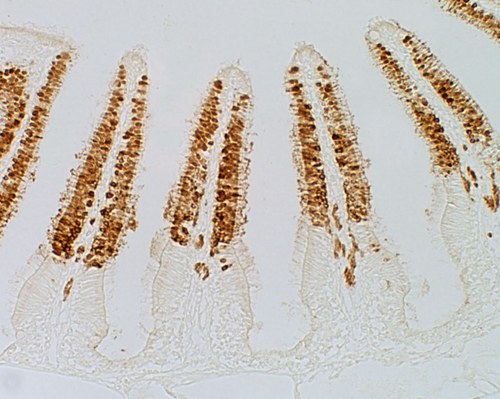Effects of toxicants and pollutants on acoustic and olfactory sensory epithelia in vertebrates

Numerous chemicals acting as toxicity agents for living organisms and environmental pollutants can induce morphological, biochemical and functional modifications of sensory epithelia.
Aquatic animals depend on chemical information from the environment in order to carry out vital life processes. Olfaction is an essential sense for detection and evaluation of the environment in all vertebrates, including teleosts. Chemical information on the environment is transmitted from the olfactory organ to the brain, influencing alarm response, predator avoidance, food finding, social communication, reproductive activity, and homing migration. Teleosts possess a single olfactory epithelium arranged in lamellae in the olfactory cavities that are positioned dorsally on each side of the head. A great number of olfactory sensory neurons (OSNs) detects odorants and sends odor information into the brain. The two main types of vertebrate OSNs are ciliated and microvillous olfactory sensory neurons. In addition, as elasmobranchs and cladistians, teleosts possess one minor group of OSNs, crypt cells. By way of the olfactory nerve, axons of OSNs reach the olfactory bulb where they contact dendrites of mitral cells and local interneurons in the glomerular layer, giving rise to complex neuropil structures, glomeruli. In the olfactory bulb, olfactory glomeruli represent the first central nervous station for odor processing, i.e. the first relay station in the olfactory pathway.
The discharge of industrial and domestic wastewater is the threat endangering aquatic environments that has the most significant impact on freshwater ecosystems, as well as agricultural production and human health. Due to their biodiversity, population structure and health conditions, fish have been judged ideal biomonitoring organisms. Recent works demonstrated that contamination of aquatic environments, i.e. exposure to neurotoxic chemicals such as heavy metals, can impair chemosensory functions, a process recently named ‘info-disruption’, and lead to a loss of olfaction in vertebrates. The fish peripheral olfactory system is in direct contact with the external environment. Therefore, it is directly exposed to dissolved contaminants, which can impair peripheral neurological function. In fish, neurobehavioral injuries induced by metals are extremely problematic due to the alteration and possible loss of olfactory-controlled behaviors basic to survival.
The aim of the present research is to investigate the effect of low concentration of metal ions on the three different OSNs present in the olfactory epithelium of teleost fish, which are ciliated, microvillous, and crypt neurons. Image analysis quantification of immunohistochemically detected neuronal molecular markers was applied to differentiate neuronal response to metal exposure.
The present research is carried out on zebrafish (the freshwater fish Danio rerio), which is a model system widely used in embryological, neurological and genetic studies and also possesses numerous advantages in toxicity assessment such as reduced housing costs and small size. Furthermore, zebrafish olfactory system, which is histologically comparable to those of other vertebrates, is largely mentioned in the literature, and cells constituting its neuroepithelium are immunologically well characterized.
Studies are also focused on the inner ear of fish. Multiple factors, such as sexual maturation, feeding habits, geographical distribution, pollution, stages of development and growth, can induce morphological variations of fish acoustic organ, in particular of the otolith. The diversity in fish inner ear structure is the largest among vertebrates, so the knowledge of the anatomy t of this organ is the first essential step in the definition of general parameters for comparative studies. Molecular markers of inner ear sensory cells are studied throughout fish development and in relation to environmental parameters.